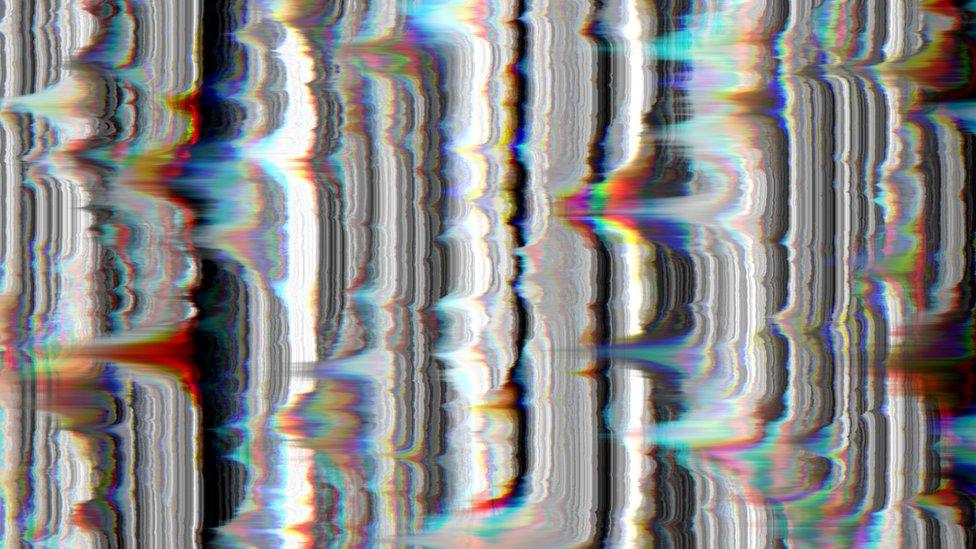White noise video on YouTube hit by five copyright claims
- Published

White noise is a term used to refer to random signals of many kinds - including acoustic and visual signals
A musician who made a 10-hour long video of continuous white noise, external - indistinct electronic hissing - has said five copyright infringement claims have been made against him.
Sebastian Tomczak, who is based in Australia, said he made the video in 2015 and uploaded it to YouTube.
The claimants accusing him of infringement, external include publishers of white noise intended for sleep therapy.
"I will be disputing these claims," he told the BBC.
Google automatically makes claims on behalf of content creators if its algorithms find a close match between the content of two videos.
In this case, the claims against Mr Tomczak do not demanding the video's removal, but instead the reward of any revenue made from advertising associated with it, external.
Without the claims, Mr Tomczak would receive such revenue himself.
"I am intrigued and perplexed that YouTube's automated Content ID system will pattern-match white noise with multiple claims," he said.
His video was originally made along with other 10-hour recordings - including one of a continuous electronic tone, external.
The claims relate to specific portions of similarly lengthy videos of white noise also posted on the site.
'Spurious' claims
Mr Tomczak said the "spurious" claims won't have a significant impact on him, though he finds them "frustrating".
"If I were making substantial money from YouTube content, such a broken system may prove to be unusable," he said.
Similar cases have occurred before. In 2012, one YouTube user reported that he faced copyright claims over birdsong captured in the background, external of one of his videos.
On that occasion, a spokesman for the claimant in question said the claim was indeed made by YouTube's automated system.
The claim was soon removed.
"Copyright does not protect the idea, but the expression of the idea," explained intellectual property lawyer Iain Connor at UK law firm Pinsent Masons.
"If I record background white noise or if I have a random white noise generator and I record that, with me being the first person to fix that recording, then I am the owner of its copyright."
Although there may occasionally be spurious claims, Mr Connor said he thought the YouTube system offered reasonable protections to both content creators and copyright claimants.
"The only other option is to go through the courts so I think on balance it's probably as good as it can be," he said.
Fooled algorithm
A spokeswoman for Google, which owns YouTube, said that the Content ID system works by automatically matching uploaded content against sample files provided by other content creators.
A match could indicate that a work has been copied but clips of white noise are too indistinct for Google's algorithms to work accurately, the company confirmed.
"The accuracy of our matching systems can only ever be as good as the accuracy of what copyright holders submit," the spokeswoman said.
"We have review teams that work to catch and prevent inaccurate claims, take action against copyright holders who knowingly or repeatedly cause errors, and we offer a robust dispute process for users who believe their video was claimed in error."
According to Google, the rate of invalid claims is below 1%.
- Published19 September 2017

- Published20 November 2015

- Published14 February 2014
